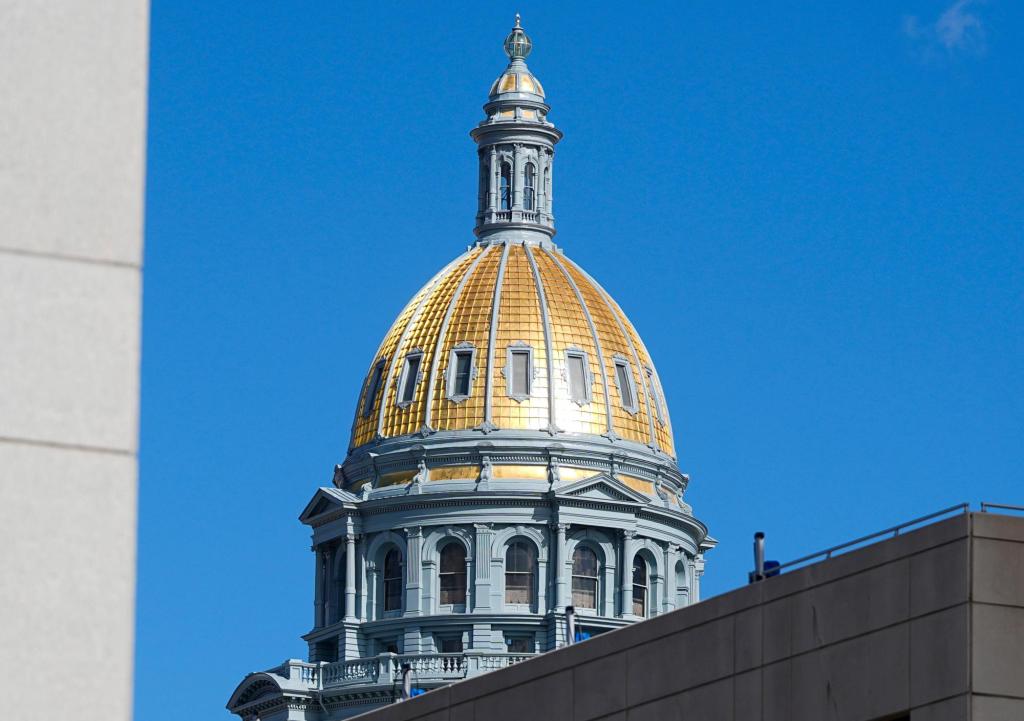An oversight subcommittee for Colorado’s public pension fund recommended Friday that state contributions keep up with inflation following a report cautioning that its funding might not be on track to meet a state-required target decades from now.
The Colorado Public Employees’ Retirement Association, or PERA, serves hundreds of thousands of Coloradans and is responsible for investing its $61.5 billion fund to ensure it meets promises to current and former employees. But a recent analysis of the program’s finances by the PNYX Group for the subcommittee warned that the fund could be short billions of dollars by 2048, when it’s supposed to be 100% funded.
State officials took note of the warning during the Friday meeting of the Pension Review Subcommittee, which is led by state lawmakers and is under the Colorado Pension Commission. But they urged against making any drastic moves without first gathering more information.
Sen. Chris Kolker, the chair of the subcommittee and a financial planner by trade, noted that the PNYX Group referred to its predicted gap as a “crude estimate.” He sees that as a reason for more investigation, not dismissal of the findings.
“This is not something that we need to have a knee-jerk reaction on,” Kolker said. “Investing is long-term investing. There are tweaks that can be made to investing to make it better. … Those tweaks, though, do not have to be made immediately because we need to understand how they impact us (and) how they impact the pension.”
PERA’s 2023 annual financial report put its funding ratio — how much money it has compared to what it owes to retirees in the future — at 69.6%, down slightly from the year before. Its unfunded liabilities add up to $27.5 billion, a marked improvement from six years ago when lawmakers passed PERA reform.
Still, the PNYX Group’s analysis predicts that the fund could see 10% higher liabilities than current projections — potentially increasing that shortfall. Its proposed solution is for the state to set aside $2 billion in a fund now, an amount that PNXY predicts would grow to more than $20 billion by 2048 and be able to cover shortfalls — and potentially achieve full funding sooner.
That’s a tall order, given state budget realities. Instead, the biggest suggested tweak to come out of Friday’s meeting was to peg future state contributions to inflation to make sure the fund keeps up with costs.
Current law calls for the state to pay a flat $225 million into the fund every year, though future legislatures always have spending discretion.
Kolker said he planned to advocate for the change at the Pension Review Commission next week. That board, made up entirely of lawmakers, recommends new legislation, though he was pessimistic about the change becoming law because of the budget impact.
More than 700,000 Coloradans are members of PERA to some degree through jobs in school districts and local and state governments, according to the agency.
The fund has always been under a microscope, perhaps never more acutely than in 2018, when analysts found it was dramatically short of projected needs. The result was the passage of a landmark law, 2018’s Senate Bill 200, to shore up the fund by cutting retirement benefits and increasing contributions — including setting the $225 million annual state contribution.
It also requires analysts to regularly assess the odds of hitting investment benchmarks decades down the road as they seek to account for future market conditions, PERA enrollment, beneficiary trends and other data points.
A separate report, done by The Segal Group, puts PERA’s odds of a fully funded pension by 2048 at between 42% and 56%, depending on underlying assumptions.
Policymakers can adjust their decisions based on those odds. Compound interest means decisions made now can have greater effects years down the road, though that’s a consideration that lawmakers need to balance against ongoing budget pressures.
Former Sen. Jack Tate, who sponsored the 2018 reform law and now serves on the subcommittee, said PERA does a good job with the money it has — it just doesn’t have enough to ensure the fund is meeting long-term financial obligations to retirees.
“If the probability (of fully funding the pension) won’t be too good, now is the time to take care of it, not 10 years from now when the hole is too big,” Tate said.
The $2 billion recommendation by the outside analysts come as Kolker and others are still aiming to fill the gap from when lawmakers failed to make the state’s $225 million contribution to PERA in 2020. Back then, lawmakers were concerned the pandemic would prompt draconian cuts across state government.
Kolker has run a series of bills in recent years that try to backfill just the principle lost from that skipped year, without accounting for missed interest and investment dividends.
Hilary Glasgow, executive director the state employee union Colorado WINS, sees the ongoing concerns about PERA as part of a continuing push to overcome worker shortages in the state. She urged state officials to ensure PERA’s solvency.
Without it, she warned in an interview, the workers the state relies on — including firefighters currently battling wildfires across the Front Range — would be harder to come by.
“How much do we love firefighters where they’re able to get out there and put their lives on the line to protect their friends and neighbors?” Glasgow said. “… That’s great, and we can appreciate them all day long, but we have to pay them enough to put food on the table — and give them good health benefits and a retirement they can rely on.”
Kolker noted during Friday’s meeting that the program’s solvency has a personal stake for him, too. His wife is a middle school counselor and PERA member.
“This has real-world implications,” Kolker said, “so you don’t want to rush to judgment.”
Stay up-to-date with Colorado Politics by signing up for our weekly newsletter, The Spot.
Originally Published:
